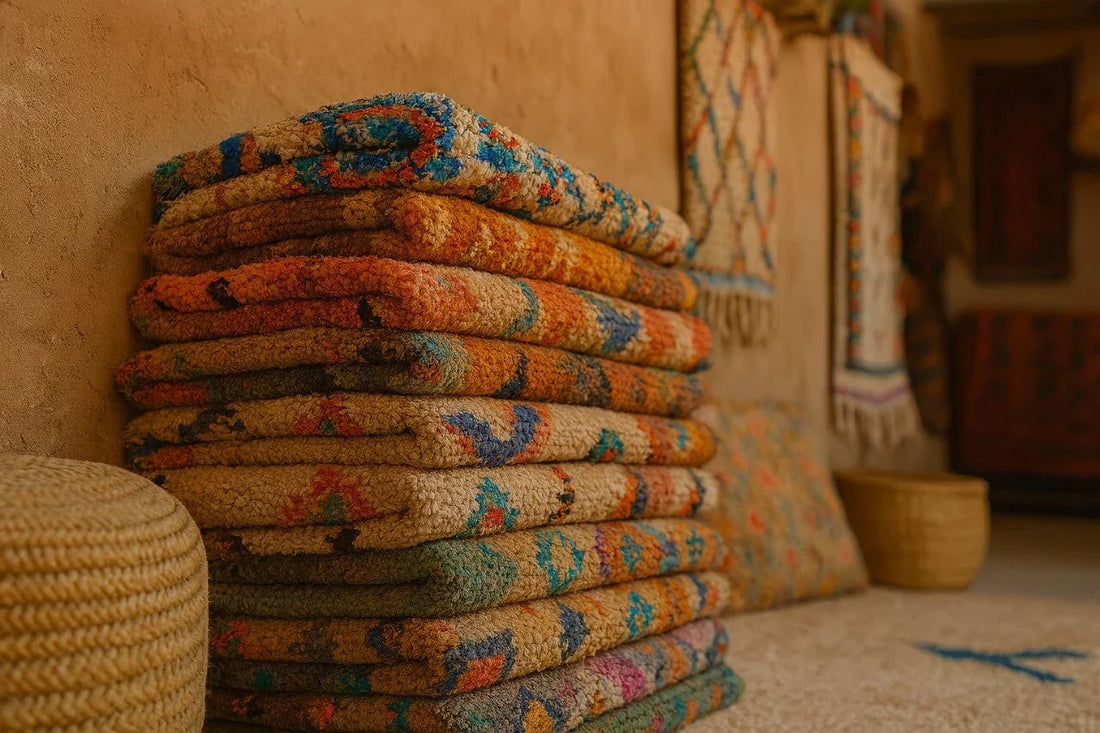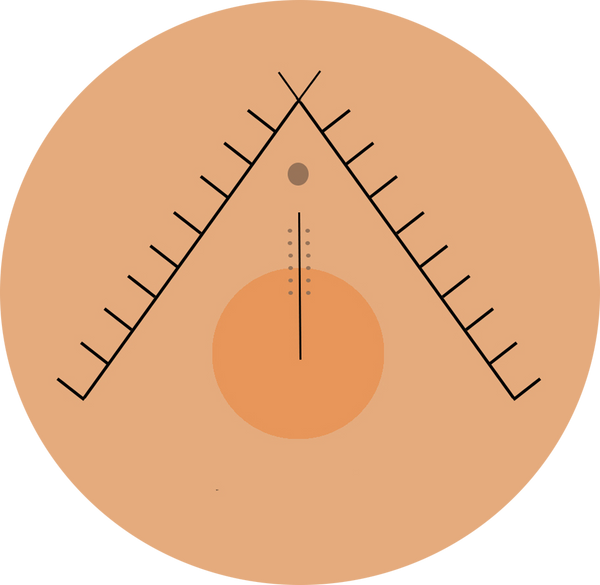
The History of Moroccan Rugs: A Story Woven in Wool
Share
Ancient Origins of Moroccan Rug Weaving
The art of rug weaving in Morocco traces its roots back to the Paleolithic era — over 12,000 years ago. The earliest examples were simple flat-woven textiles used to cover the floors of caves and shelters, providing insulation and comfort.
It was the nomadic Berber tribes, Morocco’s indigenous people, who truly shaped and refined this craft. Living in the harsh, cold environments of the Atlas Mountains, they began using wool from their sheep to weave thicker, more durable rugs. These textiles weren’t just practical; they became deeply cultural and symbolic, evolving over time into a form of visual storytelling passed down from generation to generation.
Cultural Fusion: A Tapestry of Influences:

Moroccan rugs are a reflection of centuries of cultural exchange:
Phoenician Traders (c. 8th century BC): Early trade routes brought weaving knowledge and techniques to North Africa. These ancient merchants helped introduce the concept of patterned textiles to indigenous tribes.
Arab Conquest (7th century AD): The arrival of Islam introduced new aesthetic ideas such as floral patterns, symmetry, arabesques, and Arabic calligraphy in rugs. Natural dyes like henna and saffron became more widely used.
Ottoman Era (16th–19th centuries): Ottoman influence introduced kilims (flat-weaves) and cicims (embroidered textiles), emphasizing intricate, symbolic designs with layered meanings.
French Colonialism (20th century): French designers embraced Moroccan rugs and brought them to European salons and galleries. This helped shape modern Moroccan design — blending traditional craftsmanship with minimalist aesthetics.
Symbolic Meaning: Messages Woven in Wool
In traditional Moroccan culture — especially among Berber (Amazigh) women — rugs are not merely decorative. They are visual diaries, a deeply personal form of non-verbal storytelling passed from generation to generation.
Each pattern, line, and symbol woven into a Moroccan rug serves a purpose — to protect, empower, celebrate, or commemorate a moment in the weaver’s life.
Why Symbolism Matters in Berber Rugs

Women are the weavers: In most traditional villages, it’s the women who create rugs. They embed personal emotions, dreams, fears, and life events into the design.
No written language: Historically, Berbers didn’t rely on writing — symbols were their universal language.
Protective energy: Rugs were believed to shield the home from bad luck or evil spirits, especially when gifted at weddings, births, or coming-of-age
Common Symbols and Their Meanings:

In traditional Moroccan rugs, every shape, line, and motif carries a deeper symbolic meaning — often inspired by life events, spiritual beliefs, or protective rituals. One of the most important symbols is the diamond, which represents fertility, femininity, and the womb — it’s often woven by women hoping to conceive or bless a marriage. The eye motif is used as a talisman to ward off evil spirits, offering spiritual protection for the home and family. Zigzag patterns symbolize water and life’s journey, while crosses and X shapes reflect balance, duality, and connection between body and spirit. Symbols like chevrons suggest movement or personal growth, and the barley symbol is linked to abundance and fertility, often found in rugs made for newlyweds. Delicate details such as the partridge eye stand for beauty and feminine grace, while lion’s paw motifs embody strength and male protection. Other figures like snakes or fish refer to sacred power, transformation, or blessings from nature, and frogs often represent magical energy and spiritual rebirth. Woven together, these symbols form a silent language that tells deeply personal and sacred stories, passed from one generation of weavers to the next.
